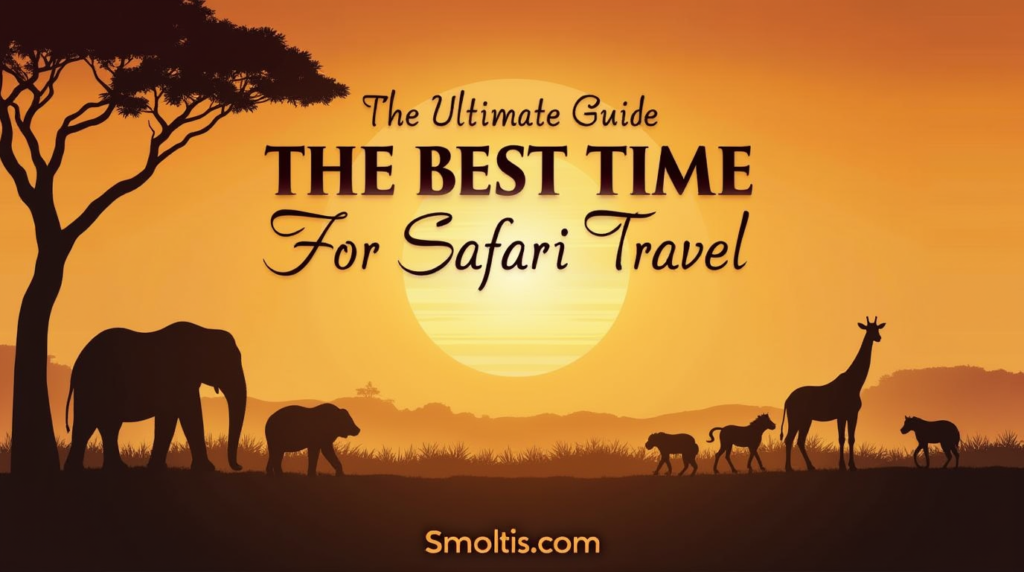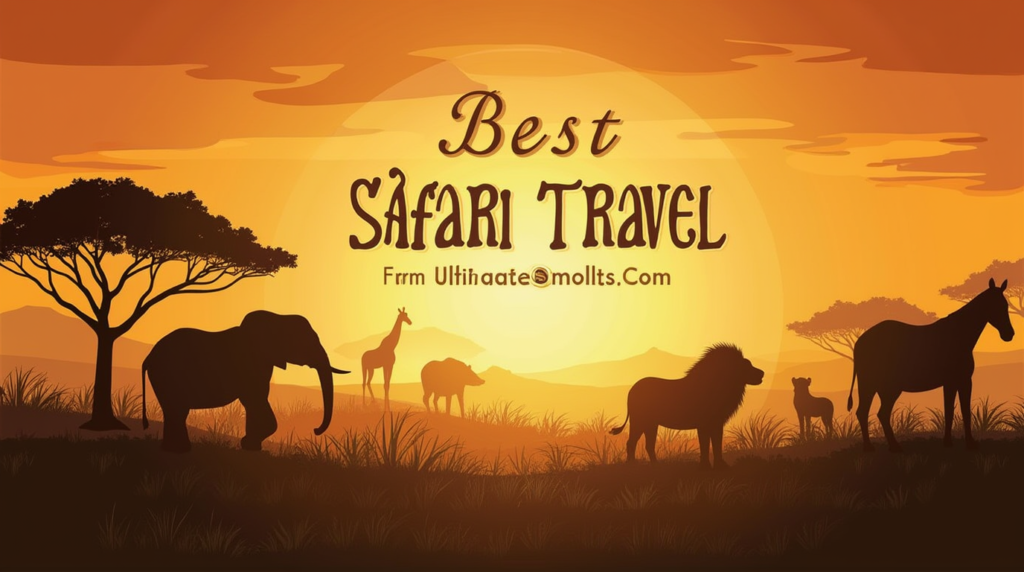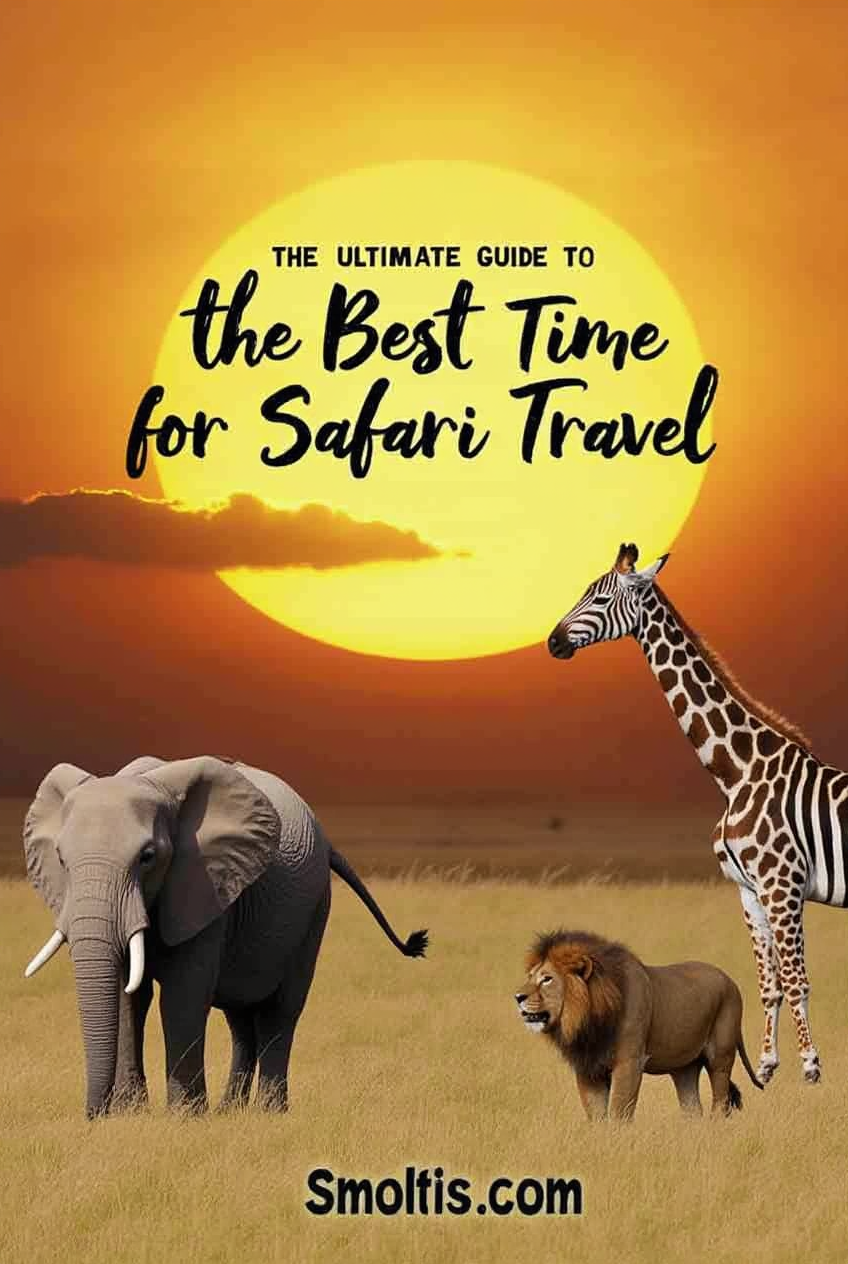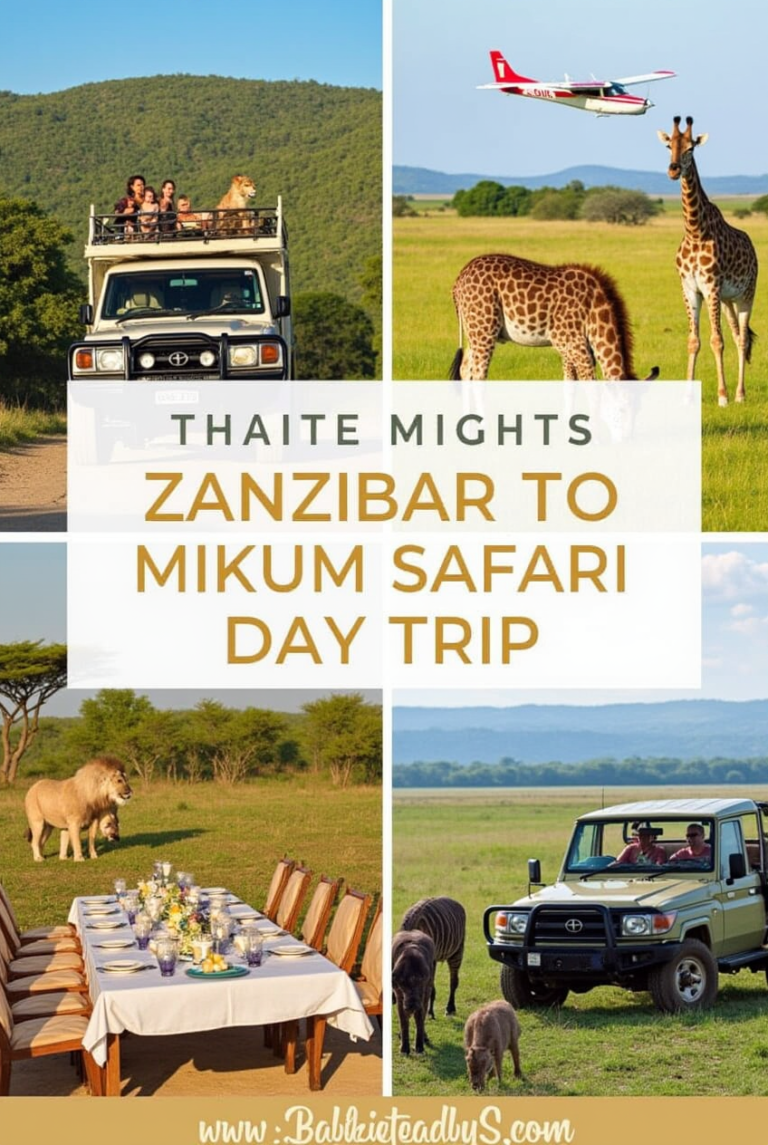The Ultimate Guide to the Best Time for Safari Travel
Introduction
There’s nothing quite like the heart-stopping moment when a lion’s roar breaks the dawn silence, or when thousands of wildebeest thunder across a river during the Great Migration. A safari is not just a vacation—it’s a life-changing encounter with nature at its most raw and beautiful. But timing is everything when planning this adventure of a lifetime.
Finding the best time for safari travel isn’t a simple question with a one-size-fits-all answer. The ideal timing depends on a complex interplay of factors including your destination, the wildlife you’re most eager to see, weather conditions, budget constraints, and personal preferences.
In this comprehensive guide, we’ll cut through the confusion and provide clear, actionable advice on when to plan your African safari adventure. Whether you’re dreaming of witnessing the Great Migration in East Africa or hoping to spot the Big Five in South Africa’s renowned game reserves, this article will help you plan the perfect safari experience.

Table of Contents
Key Factors Influencing the Best Time for Safari
The Dry Season vs. the Wet Season
Understanding the seasonal patterns is crucial when determining the best time for safari travel. Generally, safari destinations experience two primary seasons:
Dry Season:
- Wildlife concentrates around permanent water sources, making animals easier to spot
- Vegetation is sparse, improving visibility
- Roads are more accessible
- Lower risk of malaria in many regions
- Typically higher prices and more crowded
Wet Season:
- Lush, green landscapes ideal for photography
- Birthing season for many animals
- Excellent bird watching as migratory species arrive
- Fewer tourists and lower prices
- More challenging driving conditions
- Some areas may become inaccessible
The Great Migration (East Africa)
The Great Migration is one of nature’s most spectacular events, with over 1.5 million wildebeest and thousands of zebras and gazelles moving in a continuous circuit between the Serengeti in Tanzania and the Masai Mara in Kenya.
| Month | Location | Main Events |
|---|---|---|
| December-March | Southern Serengeti | Calving season |
| April-May | Central and Western Serengeti | Herds moving northwest |
| June-July | Northern Serengeti | Preparing for river crossings |
| July-October | Northern Serengeti/Masai Mara | River crossings |
| November | Eastern Serengeti | Return south |
Wildlife Events
Beyond the Great Migration, various wildlife events make certain times more appealing for safari travel:
- Calving Season (January-February): Witness newborn animals and, consequently, increased predator activity in the southern Serengeti.
- Elephant Gatherings (Dry Season): Large herds gather around dwindling water sources in places like Chobe National Park.
- Bird Migrations (November-April): Many regions see an influx of migratory birds during the wet season.
- Whale Watching (June-November): Combine your safari with whale watching along South Africa’s coast.
Weather Patterns
Weather significantly impacts your safari experience:
- Temperature: Varies by region and elevation. Generally, early mornings and evenings can be surprisingly cool, even in tropical regions.
- Rainfall: Determines road conditions and vegetation density, affecting wildlife visibility.
- Humidity: Higher during wet seasons, which can make game drives less comfortable.
- Sunshine Hours: Affects photography conditions and overall experience.
Crowds and Availability
Peak safari seasons typically coincide with school holidays in North America and Europe (June-August, December-January), resulting in:
- Higher prices
- More crowded game drives
- Limited availability at premier lodges (often booked 12-18 months in advance)
Consider shoulder seasons (May and November) for a balance of good wildlife viewing with fewer crowds and better rates.
Budget Considerations
The timing of your safari significantly impacts costs:
- High Season: Prices can be 30-50% higher than low season
- International Flights: More expensive during peak travel periods
- Special Offers: Many lodges offer significant discounts during low season

The Best Time for Safari: A Regional Guide
East Africa (Kenya & Tanzania)
East Africa offers some of the most iconic safari in region experiences, with the Great Migration being the main attraction.
Masai Mara (Kenya)
- Best Time: July-October
- Why: Witness dramatic river crossings during the Great Migration
- Weather: Warm days (75-85°F/24-29°C), cool nights
- Considerations: Extremely busy; book at least 12 months in advance
“The Masai Mara in September is wildlife photography heaven. The golden grasslands dotted with acacia trees provide the perfect backdrop for capturing the drama of the migration.” – Wildlife photographer James Warwick
Serengeti National Park (Tanzania)
- Best Time: Year-round, but varies by region
- Northern Serengeti: July-October for river crossings
- Southern Serengeti: December-March for calving season
- Weather: Varies by season and area
- Considerations: Different parts of the park excel at different times
Ngorongoro Crater (Tanzania)
- Best Time: June-September
- Why: Excellent wildlife viewing in this natural enclosure
- Weather: Cool to mild, with cold mornings
- Considerations: Foggy mornings are common, especially June-July
Amboseli National Park (Kenya)
- Best Time: June-October and January-February
- Why: Dry conditions offer stunning views of Mt. Kilimanjaro and large elephant herds
- Weather: Warm days, cool nights
- Considerations: Famous for elephant photography against Mt. Kilimanjaro backdrop
Southern Africa (Botswana, Zambia, Zimbabwe, Namibia, South Africa)
Southern Africa offers diverse safari in region experiences, from the watery paradise of the Okavango Delta to the arid landscapes of Namibia.
Okavango Delta (Botswana)
- Best Time: May-September
- Why: Peak flood season coincides with dry season elsewhere
- Weather: Warm days, cool nights
- Considerations: Unique water-based safari activities
Chobe National Park (Botswana)
- Best Time: May-October
- Why: Massive elephant herds congregate along the Chobe River
- Weather: Warm days, cool nights
- Considerations: September-October can be very hot but offers spectacular game viewing
Kruger National Park (South Africa)
- Best Time: May-September
- Why: Dry season concentrates wildlife around water sources
- Weather: Mild days, cool nights
- Considerations: June-July can be very cold at night
Etosha National Park (Namibia)
- Best Time: June-October
- Why: Wildlife concentrates around waterholes
- Weather: Cool to warm days, cold nights
- Considerations: September-October offers spectacular game viewing but can be very hot
Victoria Falls (Zambia/Zimbabwe)
- Best Time: Varies by interest
- For highest water volume: March-May
- For activities: August-December when water levels are lower
- Weather: Varies by season
- Considerations: During peak flow, the spray can obscure views
Other Emerging Safari Destinations (Rwanda, Uganda)
Bwindi Impenetrable National Park (Uganda)
- Best Time: June-August and December-February
- Why: Drier conditions make gorilla trekking easier
- Weather: Mild temperatures year-round due to elevation
- Considerations: Permits should be booked months in advance
Best Time For Safari Based on Your Interests
Photography Safaris
- Best Time: Dry season for wildlife; early wet season for landscapes
- Golden Light: Early morning and late afternoon offer the best light
- Considerations: Dust during dry season can create atmospheric shots but may affect equipment
Birding Safaris
- Best Time: November-April when migratory birds are present
- Hot Spots: Kenya’s Rift Valley lakes, Botswana’s Okavango Delta
- Considerations: Bring good binoculars and a telephoto lens
Walking Safaris
- Best Time: Dry season (May-October) when temperatures are cooler
- Top Destinations: Zambia’s South Luangwa, Zimbabwe’s Mana Pools
- Considerations: Requires moderate fitness; morning walks are best
Family Safaris
- Best Time: Dry season for easier viewing; avoid extreme heat
- Ideal Destinations: South Africa’s malaria-free reserves
- Considerations: Choose lodges with family programs and shorter game drives
Honeymoon Safaris
- Best Time: Shoulder seasons for privacy and value
- Romantic Options: Private conservancies, treehouse sleepouts
- Considerations: Combine safari with beach time in Zanzibar or Seychelles
Planning Your Safari: Essential Tips
Booking in Advance
- Peak Season: Book 12-18 months ahead for prime lodges
- Shoulder Season: 6-12 months ahead recommended
- Low Season: 3-6 months may be sufficient
Choosing a Safari Operator
- Research companies with good reputations and reviews
- Verify their conservation credentials
- Check if they employ local guides
- Confirm what’s included in quoted prices
Packing Essentials
Clothing:
- Neutral colors (khaki, olive, brown)
- Layers for temperature changes
- Light rain jacket
- Hat with brim
- Sturdy walking shoes
Gear:
- Binoculars (essential)
- Camera with telephoto lens
- Extra batteries and memory cards
- Headlamp or flashlight
- Insect repellent
Health and Safety
- Consult a travel clinic at least 6 weeks before departure
- Consider malaria prophylaxis depending on region and season
- Bring a basic first aid kit
- Purchase comprehensive travel insurance
Visa Requirements
- Check visa requirements well in advance
- Some countries offer e-visas; others require application in advance
- Multiple-entry visas may be needed for certain itineraries
Conclusion
Determining the best time for safari travel ultimately depends on what you prioritize in your safari experience. Whether you’re drawn to the drama of the Great Migration, the lush landscapes of the green season, or the concentrated wildlife viewing of the dry months, Africa offers extraordinary safari experiences year-round.
The key to planning the perfect safari is understanding the seasonal rhythms of your chosen destination and aligning them with your personal interests and budget. By considering the factors we’ve discussed—wildlife movements, weather patterns, crowd levels, and special events—you can plan a safari that exceeds your expectations.
Remember that even in “off-peak” seasons, the African wilderness delivers unforgettable encounters. Sometimes, the best safari moments come when you least expect them—a leopard lounging in a tree, a baby elephant taking its first steps, or the haunting call of a fish eagle at sunset.
Ready to start planning your dream safari? Contact a specialist safari operator who can provide personalized advice based on your specific interests and travel dates. Your African adventure awaits!






